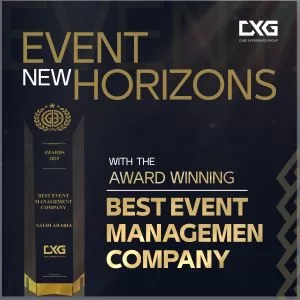Brands Social
The Complete Guide to On-Page SEO [Explained]
![The Complete Guide to On-Page SEO [Explained] 61 On-Page SEO](https://www.globalbrandsmagazine.com/wp-content/uploads/2024/07/Untitled-design-11.jpg)
If you launched your website a few years ago, you must have thought that all you need to succeed online is great content to attract visitors. But you will be disappointed after you realize that it didn’t work out as planned. That’s where on-page SEO comes in. It’s like tuning your website to play a melody that search engines and users can’t resist.
Fast-forward to now, and on-page SEO is more vital than ever, with search engine algorithms constantly evolving. Optimizing your web pages boosts your site’s visibility and helps you effortlessly attract organic traffic.
So, what’s this guide all about? It’s about on-page SEO.
This guide to on-page SEO will cover how to craft quality content that will engage your audience and perform well in search engines. Additionally, you will see the technical aspects – such as optimizing title tags, meta descriptions, and URL structures. Finally, you’ll see how to improve UXs like mobile optimization, site speed, and many more.
Let’s get started!
Introduction to On-Page SEO
On-page SEO is simply all the actions a website takes to make it rank higher in the search engine. This includes optimizing content, HTML source code, and website architecture. It’s about making your site search engine friendly so that it can come up on the first SERPs and attract more organic traffic.
Off-page SEO Vs. on-Page SEO
Off-page SEO is an SEO technique practiced externally. It has to do with building backlinks from other websites and other external signals that search engines consider. While off-page SEO is essential for building authority and trust, on-page SEO is foundational. It ensures that your website is structured and optimized correctly to take advantage of off-page efforts.
Strategies to Do On-Page SEO for Your Website
Effective on-page SEO involves several key practices. Here’s a detailed look at each aspect:
Craft Quality and Captivating SEO Content
Conduct keyword research
Researching keywords, especially long detailed keywords, is the cornerstone of SEO content creation. It is simply knowing phrases and words the potential audience types in the search bar when searching for goods, services, or information you sell. Tools such as SEMrush are invaluable for this task. SEO agencies like SEOServices.io can also help you look for keywords with a balance of good volume of searches and minimal competition.
Integrate keywords in your article naturally
Once you have your keywords, it’s crucial to integrate them in the article naturally. Overloading the article with certain keywords, I.e., keyword stuffing can be detrimental to readability. Instead, place keywords strategically in titles, headings, and throughout the body text. Be sure they fit seamlessly into the content to enhance the overall readability and user experience.
Write for your audience
While keywords are important, your primary focus should be on your audience. Understand their needs, preferences, and pain points. Create content that provides value, answers their questions, and solves their problems. Captivating content not only retains visitors on your site for longer periods but also encourages social shares and backlinks, which further boosts your SEO efforts.
Improve your E-A-T (Expertise, Authoritativeness, Trustworthiness)
Google emphasizes the importance of E-A-T in its search quality guidelines. To improve your E-A-T:
– Expertise: Showcase your knowledge and expertise through detailed and well-researched content.
– Authoritativeness: Build your authority by earning backlinks from reputable sources and featuring expert guest authors.
– Trustworthiness: Ensure your site is secure (use HTTPS), transparent, and provides accurate information.
Create valuable and engaging content
You need quality content for on-page SEO. It should be informative, engaging, and provide real value to your audience. Aside from incorporating popular content types like blog posts, you can also employ content like quizzes and polls to enhance user engagement.
Tip: Tools for Creating SEO Content:
Several tools can help when it comes to creating SEO-friendly content:
- Grammarly: Improves grammar and ensures the correct text is easy to read.
- Yoast SEO: This WordPress plugin gives SEO analysis and suggestions in real-time.
- Canva: Helps in creating visually appealing infographics and graphics.
- BuzzSumo: Identifies trending topics and popular content ideas.
Fine-Tune Title and Meta Description Tags
Craft compelling title tags
Another crucial on-page element used in SEO is the title tags. You’ll find them in search engine results, and are often the first impression users have of your page. Crafting compelling title tags involves:
– Including your primary keyword.
– Ensure it is 60 characters or less.
– Making it descriptive and enticing to encourage clicks.
For example, instead of “SEO Tips,” use “10 Proven SEO Tips to Boost Your Rankings.”
Write effective meta descriptions
The brief summary of a page’s content you see before clicking on the page is the meta description. While they might not affect the rankings, they can determine click-through rates (CTR). To write effective meta descriptions:
– Keep them under 150 characters.
– Add the primary keyword.
– Make them compelling and relevant to encourage users to click.
Best Practices and Common Mistakes
– Best Practices: Use unique title tags and meta descriptions for each page. Include primary keywords and maintain an optimal length. Make sure these tags accurately represent the page’s content.
– Common Mistakes: Avoid duplicating meta descriptions across pages, and don’t stuff keywords into title tags. Use only relevant titles and descriptions and ensure they are not misleading.
Crosscheck Your Pages URL Structure and Internal Linking
Ways to maintain your pages’ URL structure
A clean and descriptive URL structure is essential for both user experience and SEO. Best practices include:
– Avoid using special characters and unnecessary parameters.
– Keep URLs as short as possible and readable, too.
– Add applicable keywords.
– Use hyphens to separate words.
For example, use “sample.com/seo-tips” instead of “sample.com/page?id=12345”.
Importance of having internal links
An internal link takes visitors from a webpage to another webpage on a website. They help distribute page authority throughout your site and guide users to related content. Internal linking also helps the browser understand how your site is organized and makes your site more discoverable.
How to effectively use anchor text
Anchor text is the visible phrase that leads web visitors to another page or resource. Effective use of anchor text involves:
– Using descriptive text that gives users an idea of what the linked page is about.
– Including relevant keywords where appropriate.
– Ensuring that the anchor text is natural and not forced.
For example, instead of “click here,” use “learn more about on-page SEO.”
Optimize Header Tags (H1, H2, H3, etc.)
Use header tags properly
Header tags (H1, H2, H3, etc.) help structure your content and make it easier to read. Proper use involves:
– Using one H1 tag per page, usually for the main title.
– Using H2 tags for major sections.
– Using H3 tags for subsections within H2 sections – just like in this article.
Header tags should outline the main points of your page’s content to simplify it for users and web crawlers to understand.
Enhance readability for SEO
Well-structured content with clear headings improves readability. This makes the user experience better and helps search engines to accurately understand what the web content is all about.
Optimize Images and Multimedia
Use alt text effectively
Alt texts are used for image description, which is important for accessibility. Effective use of alt text involves:
– Describing the image accurately and concisely.
– Including relevant keywords naturally.
– Avoiding keyword stuffing.
For example: instead of “image1.jpg,” use “woman-using-laptop.jpg” with alt text “Woman using a laptop to research SEO strategies.”
Compress images without losing quality
Large image files take more time to load causing slow load rate, thereby affecting user experience and SEO. Apps like TinyPNG or ImageOptim can compress images without losing quality. This helps improve site speed, which is a critical ranking factor.
Utilize videos and infographics for SEO
The use of videos and infographics improves engagement and provides additional SEO benefits. To optimize them:
– Use descriptive filenames and alt text.
– Provide transcripts for videos to improve accessibility and SEO.
– Use structured data to help search engines comprehend the content.
Improve Your Website’s Speed and View on Mobile
Since most internet users access websites on mobile devices, mobile optimization is essential. A mobile-friendly site improves UX and is favored by search engines.
Tools for checking if your website is mobile-friendly
Tools like Google’s Mobile-Friendly Test and PageSpeed Insights can analyze your site’s mobile performance. These tools suggest ways to improve based on insights to help you ensure your site is fully optimized for mobile users.
Techniques to improve site speed
– Optimize images by compressing them.
– Minimize JavaScript and CSS files.
– Utilizing Content Delivery Network (CDN) for global content distribution to reduce server load and improve load times.
Check for Structured Data and Rich Snippets
What is structured data?
Structured data offers guidance for web search tools, highlighting essential details and defining content purpose. It assists search engines in comprehending the content and can result in improved listings called rich snippets.
Apply structured data markup
An example of structured data is the Schema markup. Use it to provide detailed data and information about what you put out, such as products, reviews, events, and recipes. Tools like Google’s Structured Data Markup Helper can assist in adding the schema markup to your site.
Benefits of rich snippets
Rich snippets provide additional information within search listings to enhance the appearance of your listing and make it more appealing to users. This can enhance your click-through rate (CTR) and drive more traffic to your site.
Benefits of rich snippets include:
– Increased visibility: Enhanced listings stand out more within search listings and attract more attention.
– Higher click-through rates: Additional information such as ratings, reviews, and images can entice users to click on your listing over others.
– Better targeting: Structured data simplifies the page content to the search engines better, leading to more relevant search result placements.
Maximize Click-Through Rate
Here are some strategies to improve CTR:
– Optimize title tags and meta descriptions: These should be compelling, relevant, and accurately reflect the content of your page.
– Use numbers and power words: Titles with numbers (e.g., “10 Tips for…”) and power words (e.g., “ultimate,” “best,” “proven”) tend to attract more clicks.
– Implement rich snippets: Use structured data to provide additional information within search listings.
– Include a Call to Action (CTA): Encourage users to click with a strong, clear call to action in your meta descriptions.
Monitor and Analyze On-Page SEO Performance
Monitoring and evaluating your on-page SEO performance helps understand what’s functioning and where there’s room for improvement. This entails consistently monitoring necessary parameters and utilizing that information to adjust your strategies.
Focus on on-page user experience indicators
Metrics of user experience, such as dwell time, and so on give valuable insights into how users engage your site’s content. Improving these metrics can enhance your on-page SEO performance.
– Bounce rate: This calculates the percentage of visitors who view only a page before leaving your site. A high bounce rate could suggest that what you have on your site isn’t meeting user expectations.
– Time on page: How long users spend on a page averagely. Longer times generally indicate more engaging content.
– Pages per session: How many pages users view during a session. Higher numbers suggest that users find your content valuable and are exploring more of your site.
Metrics to Look Out For
Important metrics for on-page SEO performance include:
– Organic traffic: Website visitors who click on your site through search engines. More organic traffic means more visibility and ranking.
– Keyword rankings: Track your target keywords to see how your pages are ranking within search listings.
– Click-through rate (CTR): If the CTR is high, it implies that the title tags and meta descriptions are good enough.
– Conversion rates: The fraction of viewers that take action- like subscribing for a newsletter, checking out their cart or filling the contact form. When you have more conversion rates, it means that your site is effectively driving user actions.
Tools for tracking on-page SEO performance
There are several tools you can use to monitor and analyze your on-page SEO performance:
- Google Analytics: Offers comprehensive analysis of your site’s traffic, actions users take, and conversion rates.
- Google Search Console: Offers data on your site’s search performance – including impressions, clicks, and average position for your keywords.
- SEMrush: A tool for on-page SEO that tracks keyword rankings, backlinks, and competitor analysis.
- Ahrefs: Another powerful SEO tool for tracking keyword rankings, analyzing backlinks, and performing site audits.
Adjust plans based on data
Analyze and review your data so you can make plans accordingly. Use A/B testing to experiment with different approaches and continuously optimize based on your findings. Don’t be rigid; let data guide your decisions.
Wrapping Up
The importance of on-page SEO cannot be overemphasized when making your SEO efforts work out. When you constantly create quality content, optimize technical elements, and enhance user experience, you can improve your rank on search engines and attract more organic traffic. Consistently track your performance, adapt strategies using data insights, and stay current with the most recent on-page SEO trends to uphold and enhance your rankings in search engine listings.


















































